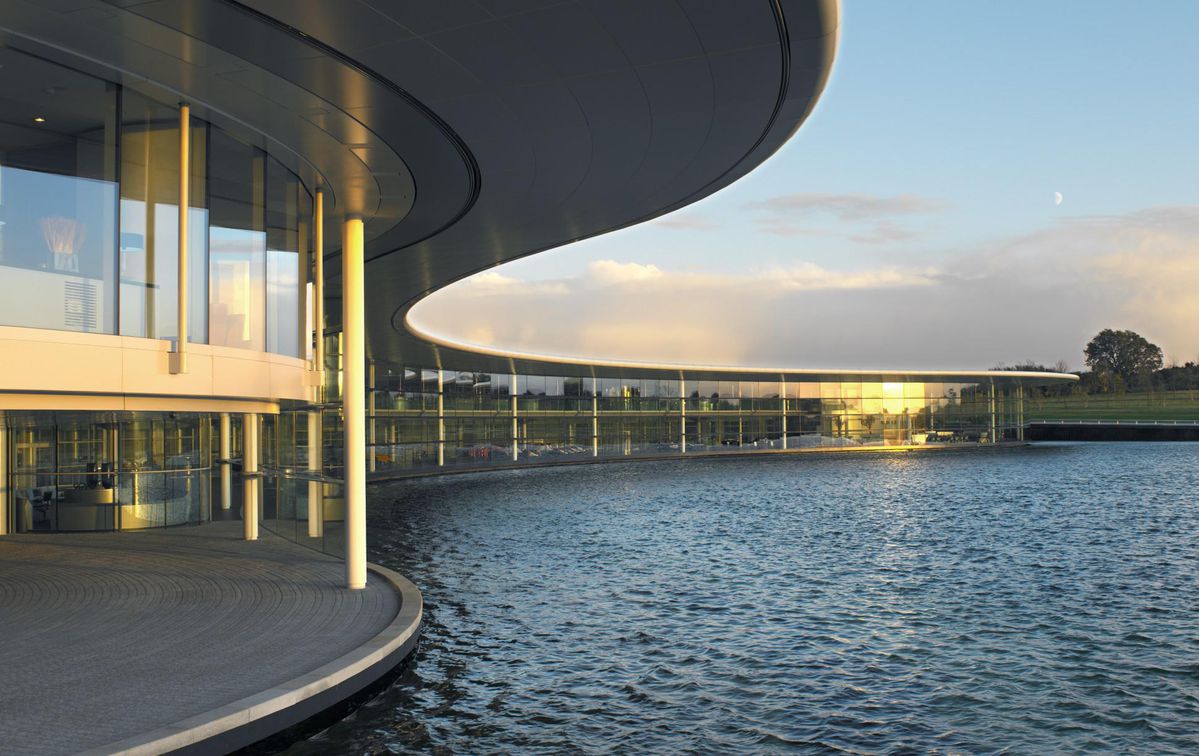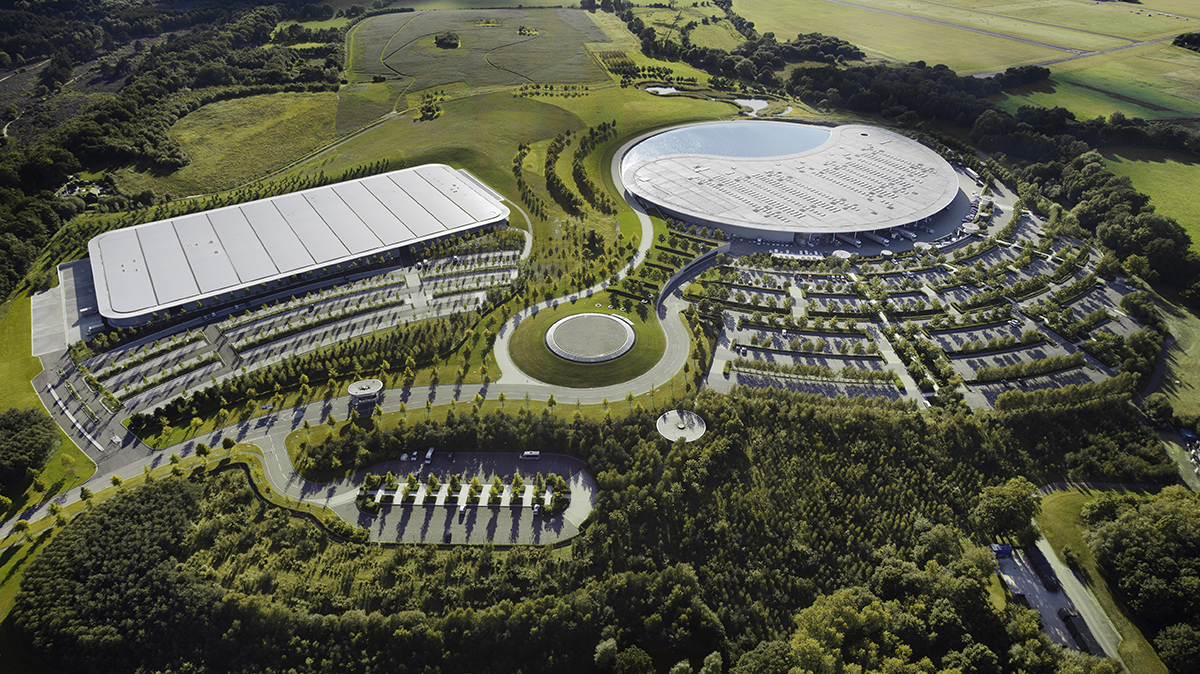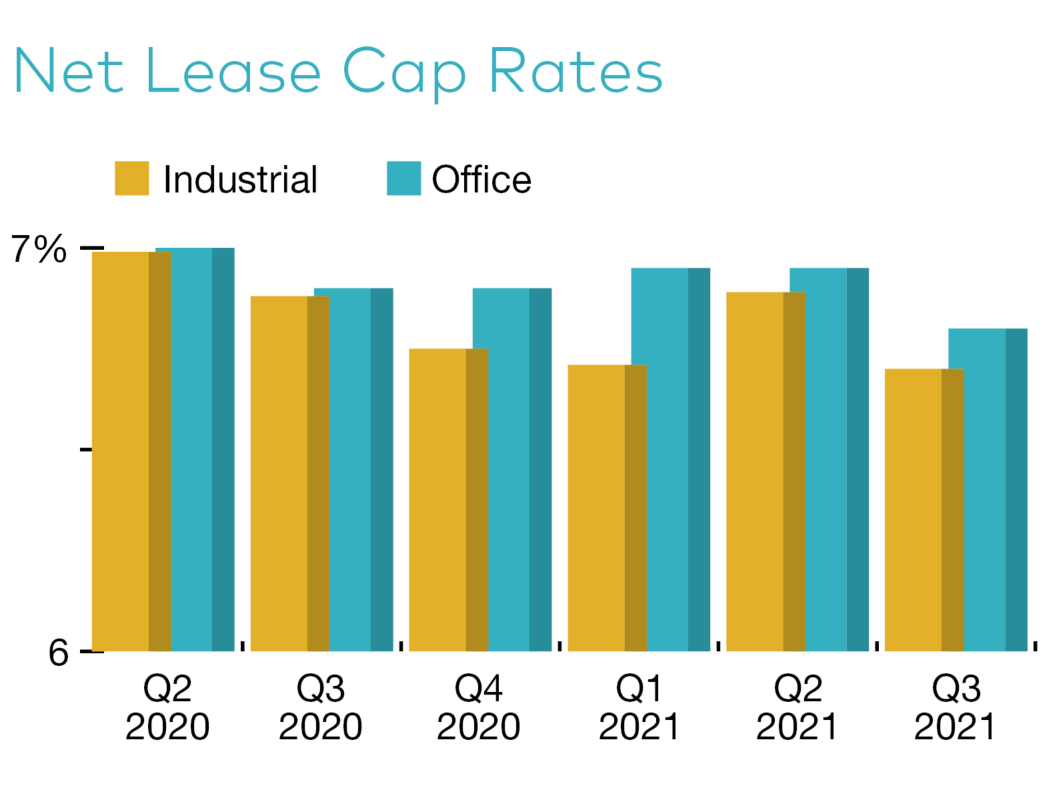Net Lease Borrowers Take the Driver’s Seat
Healthy competition among lenders is benefiting single-tenant investors.
An historically low interest rate environment coupled with fervid demand for assets continues to drive net lease investment sales and push capitalization rates to all-time lows. The good news for buyers is that debt providers have an equally fervent appetite for the assets, especially those occupied by companies with strong credit profiles in the industrial and office sectors.
“There is no shortage of capital,” stated Mark West, co-leader of JLL’s national corporate finance and net lease group. “Everybody is active in the market—banks, debt funds, life insurance companies, and the CMBS and CLO market. And overall underwriting is very good; it’s not overly aggressive like it was in 2007.”

Global Net Lease secured financing in just two weeks for its acquisition of the McClaren Campus,in Surrey, England. Image courtesy of McLaren
Net lease industrial property sales totaled $34.7 billion in the first half of 2021, a year-over-year increase of 8.6 percent, and accounted for 48 percent of net lease dollar volume, according to CBRE, which analyzes single-tenant asset sales as a proxy for net lease investment trends. Over the same period, net lease office sales declined 6.1 percent to $21.9 billion and accounted for 30.3 percent of total volume.
As a result of the high demand and the limited amount of assets on the market, cap rates continue to compress. In the third quarter, rates for industrial properties in the U.S. dropped 19 basis points to an average of 6.7 percent, while cap rates for office properties fell 15 basis points to 6.8 percent, according to the Boulder Group.
Both were historic lows and coincided with a decline in the 10-year Treasury yield early in the quarter, Boulder Group said. But between late August and mid-October, even a 30-basis point rise to push the benchmark rate to around 1.5 percent had failed to materially affect interest rates, observers said.
Against that backdrop, lenders are eager to put money to work, particularly in the industrial space. When it comes to the office sector, lenders are being more selective than before the pandemic amid lingering questions about long-term utilization of space, observers say. But they still have a strong appetite for build-to-suit projects and single-tenant properties occupied by financial, technology or other mission-critical companies. Less appealing to debt sources is a back-office unit leased to a company in an industry that still looks risky due to COVID-19.
“The amount of debt capital is deep and competitive across all sources,” said Travis DeBee, vice president of capital markets at Stonemont Financial Group, an Atlanta-based investor with $4 billion in assets under management. “But which lender borrowers go with depends a lot on the investor’s hold period and what they are looking to do long-term with the asset.”
Stonemont typically works with banks and other balance-sheet lenders and has a three- to five-year investment horizon. With a 10 million-square-foot portfolio, the firm is focused on office and industrial build-to-suit and sale-leaseback transactions, as well as speculative industrial development. “Most banks have a lot of liquidity,” he explained, “and we’re seeing them get more aggressive.”
No Lack of Options
Net-lease borrowers that are looking for permanent, 10-year fixed-rate financing will find life insurance companies most competitive on the cost of capital today, especially on a deal with a highly rated credit tenant, said Craig Tomlinson, senior director & partner at Stan Johnson Co. By comparison, the buyer of an asset with a riskier profile may receive more leverage from CMBS lenders.
To illustrate the variations, Tomlinson cited the example of a term sheet for a $25 million, 10-year loan on an office and laboratory property with a BBB-rated tenant. A life company offered an interest rate between 3 percent and 3.25 percent but didn’t commit to a range for loan-to-value. A CMBS lender offered up to 75 percent LTV—or 60 percent to 65 percent with full-term interest-only payments—at a rate of 3.1 percent to 3.5 percent. And a bank lender that would provide up to 70 percent LTV offered an interest rate ranging from 3.25 percent to 3.5 percent, although it offered a 2.85 percent rate for a shorter term.
“Every lender has their fastball,” Tomlinson stated, “and borrowers need to recognize that they are set up to reward you for different kinds of deals.”
Indeed, institutional investors like pension funds looking for long-term holds are most likely to turn to life companies. By contrast, the substantial interest-only terms currently offered by the CMBS market appeal to investors that need high cash-on-cash returns over a shorter period, said Will Pike, Atlanta-based vice chairman & managing director of CBRE’s net lease property group and corporate capital markets practice.
“CMBS lenders are extremely aggressive because there is a lot of demand for pools that contain a good amount of industrial,” said Pike. “Not all groups are looking for CMBS financing, obviously, but for certain investors the product looks pretty nice.”

Aerial view of the McLaren Production Centre (left) and McLaren Technology Centre (right). Image courtesy of McLaren
CMBS Limitations
CMBS lenders returned to the market a little more than a year ago after the initial pandemic disruption, and from that day they have been competing hard for deals, observers say. But the financing is more suited to transactions with a little more risk, as represented by higher cap rates, such as warehouses in secondary or tertiary markets, or that house tenants with a lower credit quality.
That’s because the CMBS market’s debt yield requirements determine how much leverage borrowers can receive. The debt yield is the return a lender could achieve if it took possession of the property; as such, a cap rate of 5 percent or lower typically makes the deals unworkable for an LTV higher than 50 percent, due to the inability to meet debt service coverage targets, experts say.
“LTV is important, but debt yield is important, too,” West said. “If lenders want a 7 or 8 percent debt yield, you can’t get aggressive leverage if you’re buying something at a cap rate at 5 percent or below – it’s hard to aggressively size those loans. You’re probably going to be limited to closer to 50 to 60 percent LTV.”
That’s not an issue for Global Net Lease, a New York-based REIT that recently acquired the 841,000-square-foot McLaren Group headquarters in the United Kingdom for $236.3 million in a sale-leaseback deal. The company typically finances its acquisitions through an existing credit facility, and later it determines whether to replace the relatively low amount of leverage—generally around 50 percent—with permanent mortgage debt.
While it has historically turned to several kinds of lenders, the company has more recently leaned toward the CMBS market because of the ability to group multiple assets under one bond, said Boris Korotkin, senior vice president of capital markets and corporate strategy at Global Net Lease.
“It takes just as much time to administer a small loan with one property as it does a large loan with multiple properties,” he said. “So the CMBS market has always been a draw for us.”









You must be logged in to post a comment.